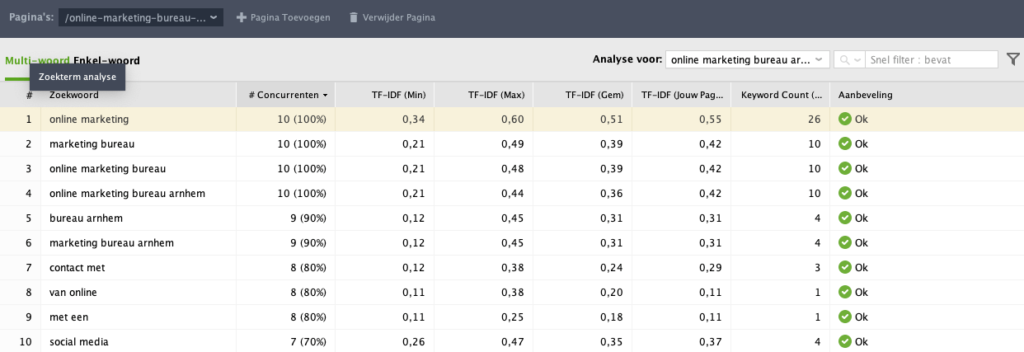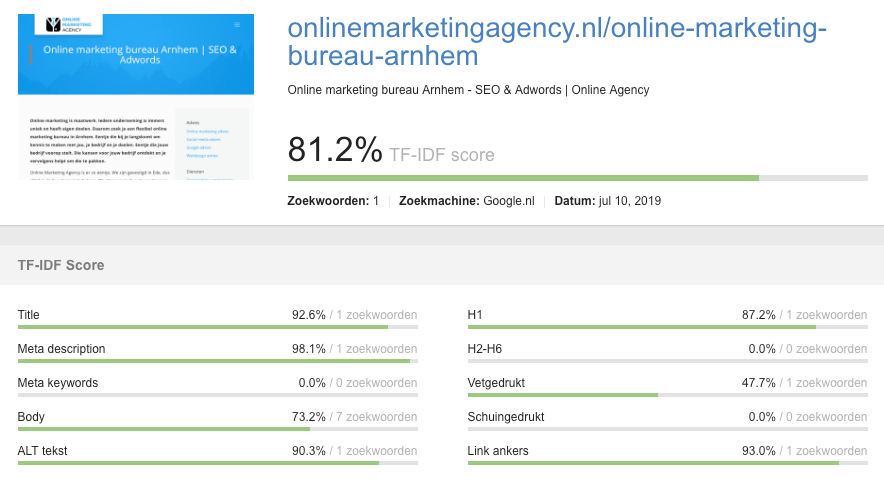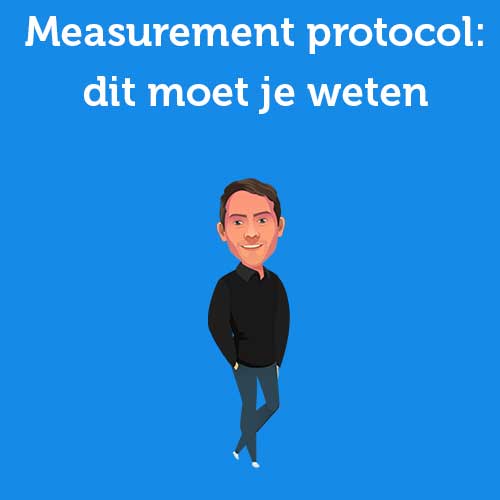Menu
Table of contents
These conflicting posts obviously don't really help you (the SEO do-it-yourselfer), so it's time for me to get highly personal into the discussion.
I like to tell you why this particular analysis can be important for your SEO and how to perform it.
But first, let's start at the beginning: what exactly is it?
What is TF-IDF?
TF-IDF stands for Term Frequency - Inverse Document Frequency.
Analysis indicates how important a particular word (or combination of words) is in a text, compared to other texts.
So a kind of semantic analysis, but better.
Because to determine that importance, a complicated mathematical formula is used (for the whizkids to find on Wikipedia ), which I won't bother you with further.
In any case, it amounts to counting the relevant words (Term Frequency) and multiplying that number by some factor (Inverse Document Frequency).
That factor is lower for common terms and higher for terms that are less common, filtering out words such as "the," "the," and "one.
Pfoe, complicated.
A little example will hopefully make it a little clearer.
Example
The following terms appear in a number of texts about a plumber in Arnhem:
- the (50x)
- leakage (5x)
- house (1x)
The mathematical formula assigns a factor to each term:
- one: 0.001
- leakage: 0.6
- house: 1
By multiplying the number by the factor, you get the following statistical numbers:
- one: 50*0.001 = 0.050
- leakage: 5*0.6 = 3
- house: 1*1 = 1
As you can see, the word "leakage" would be the most important, and terms that occur frequently or very infrequently are designated by the formula as less important or relevant.
Okay, enough math for today.
Let's move on soon.

What does TF-IDF do for your SEO?
TF-IDF analysis thus uncovers the terms, words or keywords that are important in a collection of texts.
Translating that into an SEO context means finding out the most important terms from your competitors' texts.
For example, by analyzing the top 10 search results for a particular keyword, you'll discover what those texts are about, what search terms they use and what subtopics they cover.
In short, it gives you insight into why those pages rank so well and inspiration to write your own text that includes all those important terms.
And that eventually leads to a complete text that covers your topic as fully as possible.
Content that is better than the current top 10.
And so content with the potential to land in the number one position.
How do you use TF-IDF?
Using TF-IDF to improve your content is not difficult and, fortunately, does not require a lot of time.
In just 4 steps, you can already create better texts:
1. Write your texts
TF-IDF is useful in developing new content, but even better in optimizing existing texts.
Therefore, just start writing your text (preferably based on thorough keyword research) and put the page online.
It doesn't matter if it's not perfect, because we're still going to optimize it using the analysis.
2. Perform the analysis
More math (are you having flashbacks to your high school days yet?).
But don't worry, you don't have to use a calculator yourself to calculate a weight factor for each term using logarithmic scales.
We have tools for that.
Few tools, that is, but at least they are there.
The easiest is the TF-IDF analysis tool from SEO Powersuite's Website Auditor.
And what's more, free to try.
Under the heading "Content Analysis," you will find the TF-IDF analysis.
Simply enter your keyword and the link of your current page there, and the tool instantly analyzes the top 10 search results.
Afterwards, you get instant advice on which words to use more (or less) and the tool gives you suggestions on other relevant keywords.

TF-IDF example of SEO Powersuite
3. Optimize your content
Back to your just-written text.
You can use the results of the analysis to refine your content.
Adjust your current paragraphs as needed and introduce the new topics you hadn't thought of yet.
But don't force it.
Make it a logical story where the topics follow each other naturally.
That way, you can be sure that your visitor also gets something out of it (and that's what it's all about in the end).

TF IDF reporting from Seo powersuite
4. Publish again
Ready?
Beautiful!
Publish your content again, have the page indexed by Google using Search Console and wait quietly.
That's all you can do.
Results & impact
Some cases find a correlation between updating your content based on TF-IDF and higher rankings.
On the contrary, other studies show that there is no correlation.
The truth is that the effect is just too difficult to measure.
There are so many other variables affecting your rankings that isolating a single factor is simply not doable.
So does your page score better in Google after the analysis?
Maybe so, maybe not.
But does the formula help you on your way to better content and a better user experience?
Yes, that for sure.
And that's why the TF-IDF analysis is a handy tool to have in your SEO toolbox.











Written by: Daniel Kuipers
Daniel is the founder of Online Marketing Agency. He constantly scours the Internet for the latest gadgets and tactics and blogs about them in understandable language. Well, sometimes.